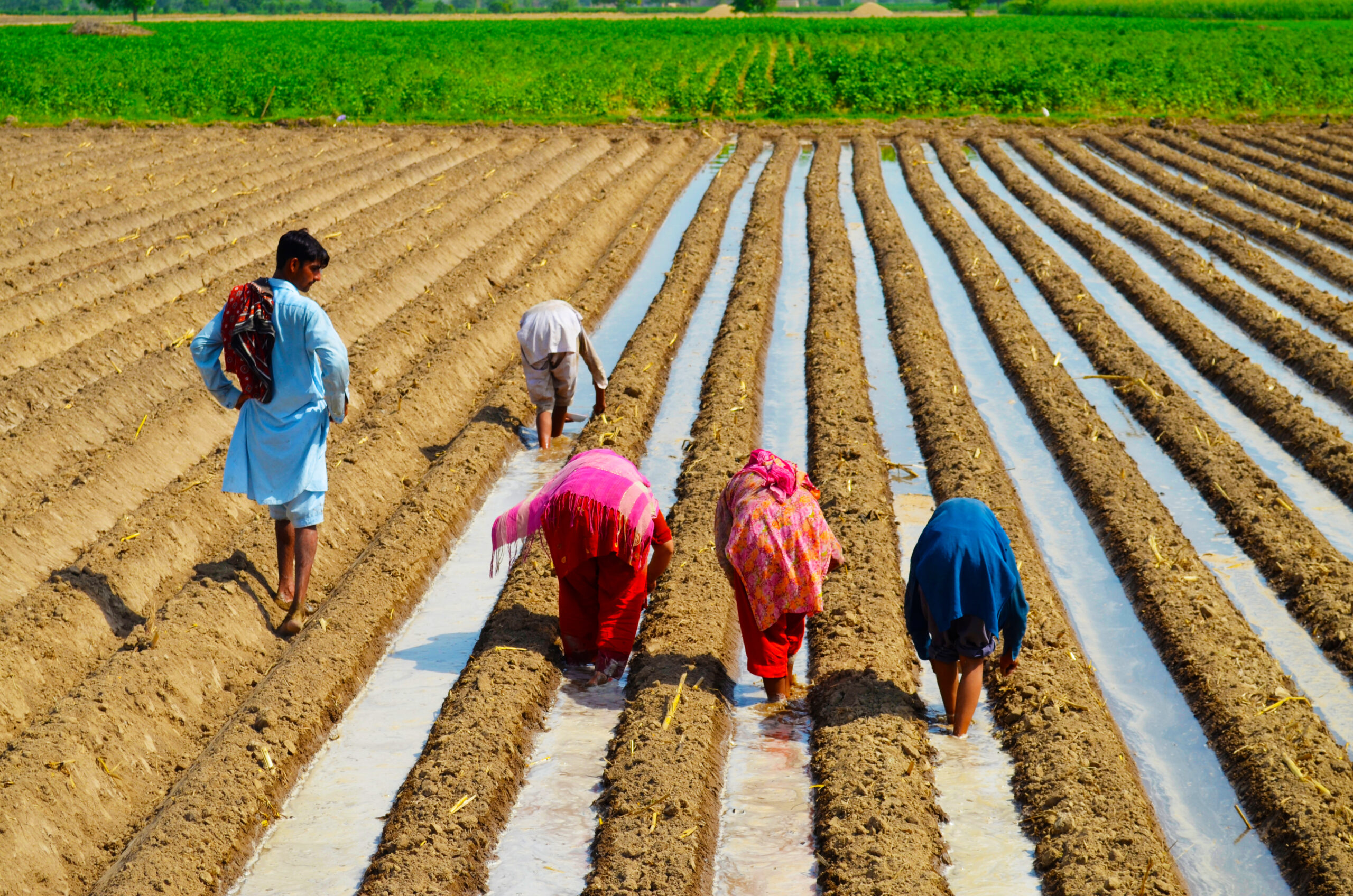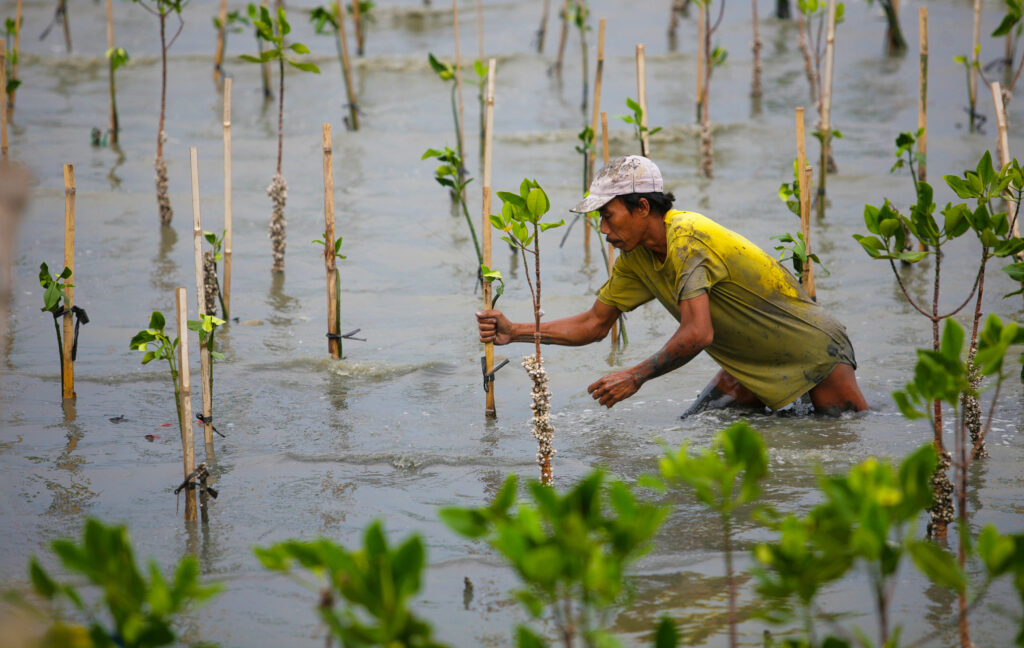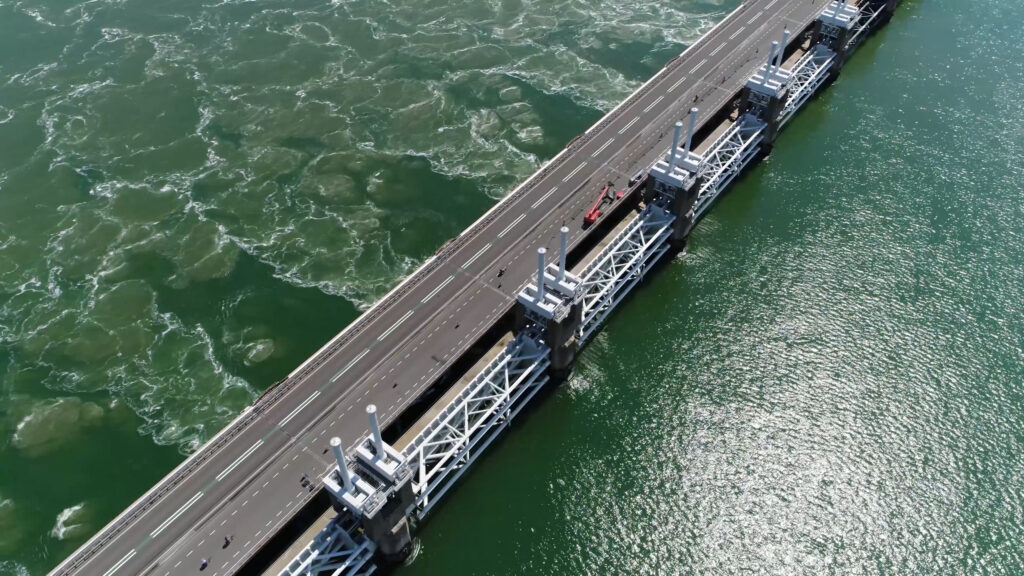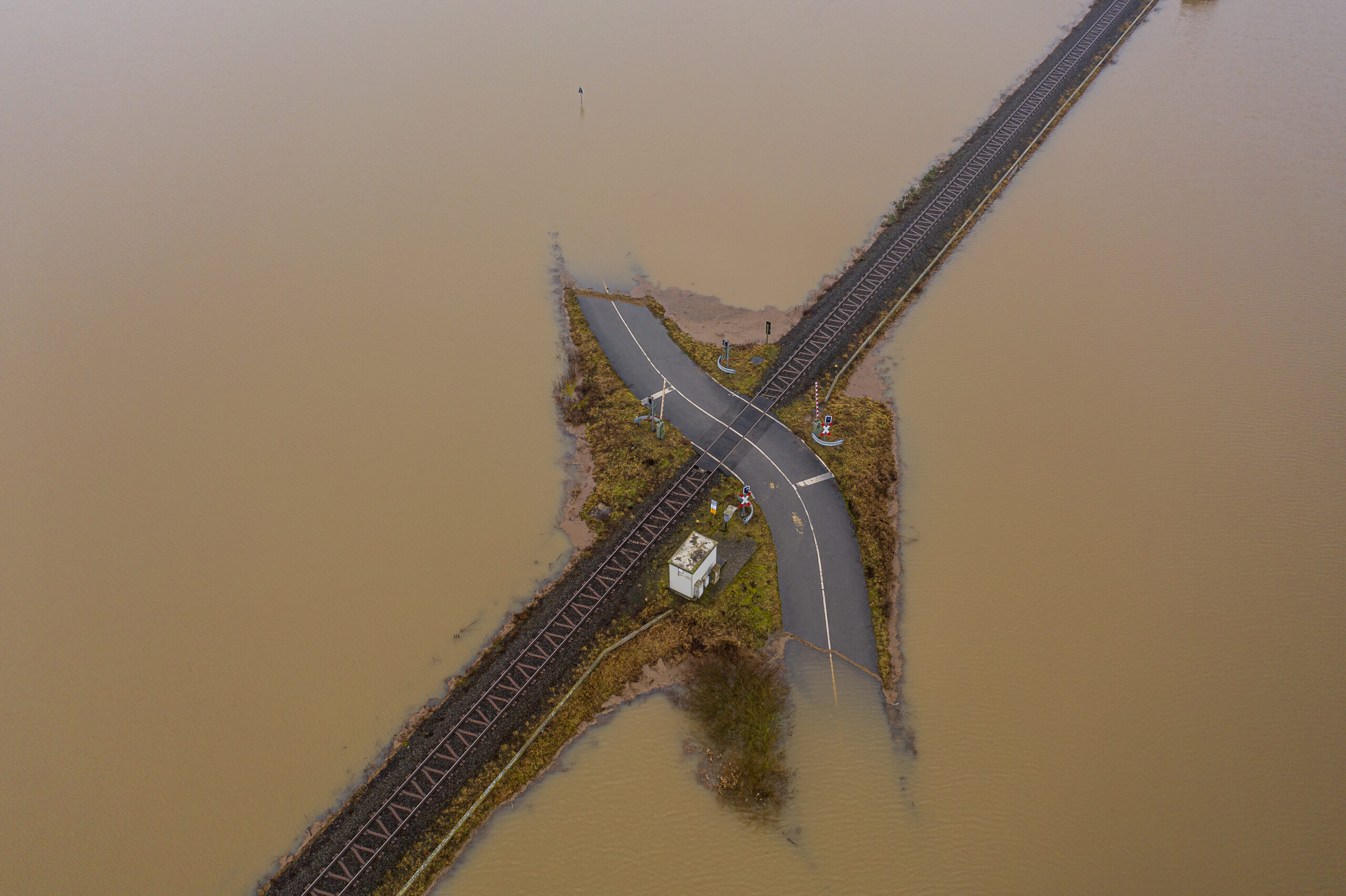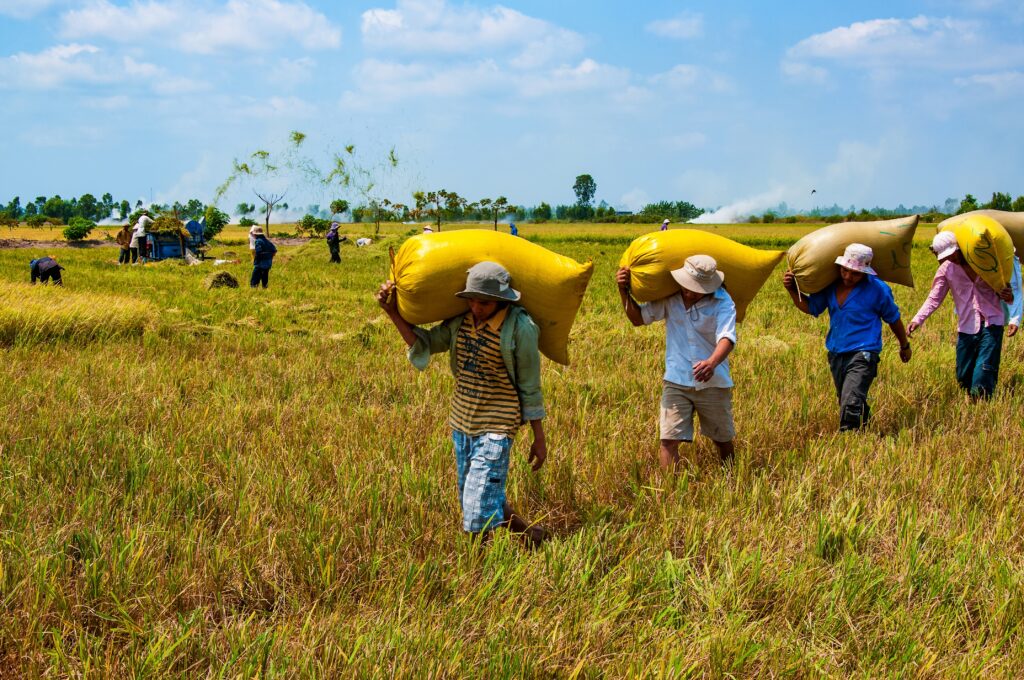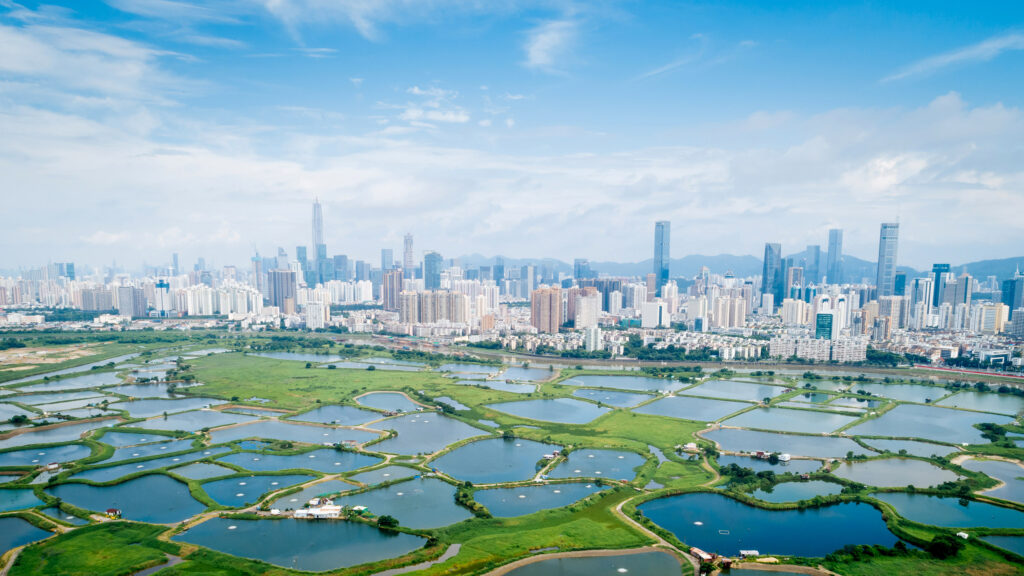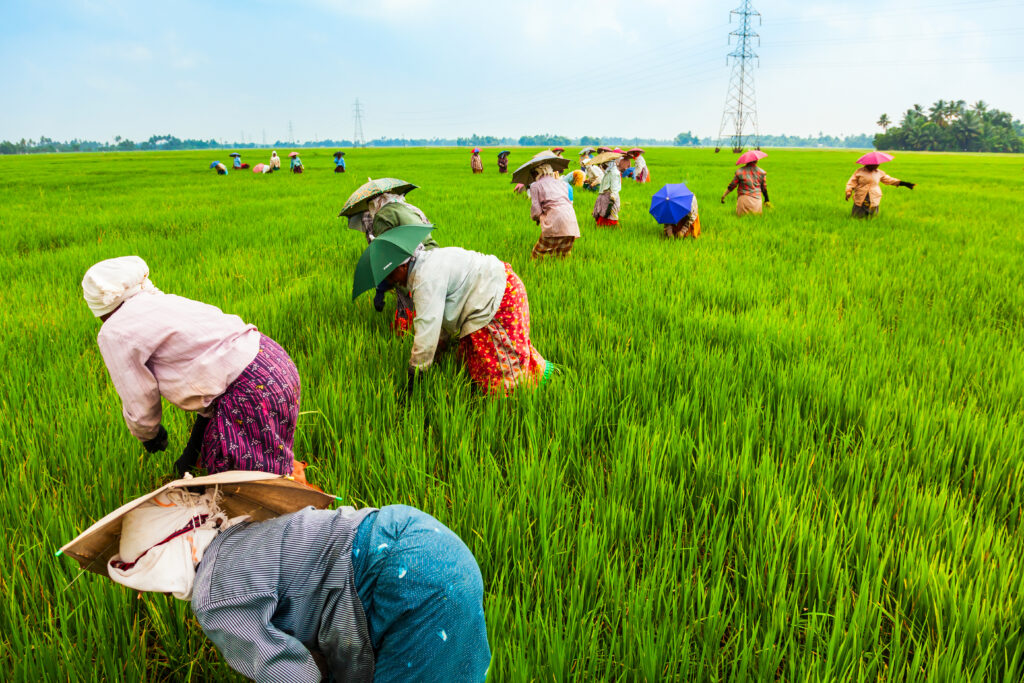Pakistan has been experiencing increasingly severe droughts and devastating floods that have severely affected its population. Meanwhile, the weather events are also sowing grief for Pakistani farmers.
According to the World Bank, changes in monsoons and increased temperatures are likely to bring considerable challenges to Pakistani farmers, particularly in the north.
Floods in Pakistan
The latest “superfloods” in 2022 affected more than 30 million people and killed more than 1,400, with rivers breaking their banks, flash flooding and glacial lakes bursting. The monsoon floods left one-third of the country inundated, damaging infrastructure as well as homes and agricultural land.
They also caused the deaths of hundreds of thousands of livestock, damaged the livestock sector and destroyed vast swathes of the country’s major crops, affecting Pakistan’s food security.
It wasn’t the first time Pakistan experienced a lethal combination of drought and flooding. In 2010, floods left one-fifth of the country underwater, wreaking damage to Pakistan’s economy and infrastructure and leaving 90 million people to food insecurity.
Pakistan was among the 10 countries most affected by climate change in Germanwatch’s Global Climate Risk Index between 2009 and 2019. It is also one of the least able to adapt and has scored 149th in terms of climate resilience.
How Big is Pakistan’s Agriculture Sector?
The agricultural sector is of key economic importance for Pakistan. It provides employment to roughly 25 million people, over 40% of the labour force. More than 70% of economically active women in the country depend on agriculture as their main source of income.
Agriculture is the second-largest economic sector in Pakistan, where it constitutes approximately 19% of the national gross domestic product (GDP).
Increasingly, researchers in Pakistan have been looking at ways to increase the resilience of the country’s agricultural sector through what is known as climate-smart agriculture (CSA).
“The agriculture sector has grown tremendously over the past seven decades,” reads a recent study by the Pakistan Agriculture Research Council (PARC) and the Asia-Pacific Network for Global Change Research (APN). “However, the overall agricultural productivity is lower than the global average, and the country could not achieve self-sufficiency in food production,” the study continues.
This is where, the report’s authors say, climate-smart agriculture (CSA) comes in to help the country boost productivity while taking into account social, economic and environmental factors in the specific context of Pakistan.
What Is Climate-smart Agriculture?
According to a definition by the Food and Agriculture Organisation (FAO), CSA does not refer to a specific agricultural technology or practice but rather refers to “an approach that helps guide actions to transform agri-food systems towards green and climate-resilient practices”.
Pakistan consumes as much as 90% of its available water for agriculture, with farmers traditionally flooding their fields to irrigate. Half of that water goes to waste due to such irrigation practices, according to the authors of the PARC-APN report.
The Water Situation
Meanwhile, water availability in Pakistan is decreasing quickly. According to the International Monetary Fund (IMF), the country’s per capita annual water availability decreased from 1,500 cubic metres in 2009 to 1,017 cubic metres in 2021.
Climate-smart Agriculture in Pakistan
High-efficiency irrigation systems are, therefore, among the “climate-smart” practices the authors of the report suggest for Pakistan, as are crop rotation and diversification – with the second referring to the practice of growing a mix of important crops on a specific piece of land simultaneously.
Other ways for Pakistani farmers to adapt include the use of stress-tolerant crops such as millet – one of Pakistan’s traditional crops. Scientists say it is more suitable amid a changing climate than the large-grain cereals, such as wheat and rice, that have gained popularity in South Asia since the 1960s. Pakistan is one of the world’s largest producers of rice. While it plays a key role in its export earnings, rice cultivation also requires great amounts of water.
“We need to reconfigure the whole agriculture paradigm where the emphasis is on supporting smaller farmers and Indigenous groups, which are appropriate for a particular ecosystem,” Daanish Mustafa, a professor of critical geography at King’s College London, told Climate Impacts Tracker Asia.
“100 years ago, 90% of Pakistanis would be eating millet. Today, 100% are eating wheat. 100 years ago in Jordan, we had never seen rice, but today, 90% of Jordanian food is coming from rice,” Dr. Mustafa explained. “These are cultural choices that societies have made, which are inappropriate choices for the kind of ecological issues that we’re in.”
Ylenia Gostoli
Journalist, Istanbul
Ylenia is a reporter and news editor. She has covered politics, social change and conflict across the Middle East and Europe. Ylenia has worked for and written for several international publications, including DW, Al Jazeera, Foreign Policy, New Humanitarian, NPR and many others. Her work on refugees, migration and human trafficking has won awards and grants.
Ylenia is a reporter and news editor. She has covered politics, social change and conflict across the Middle East and Europe. Ylenia has worked for and written for several international publications, including DW, Al Jazeera, Foreign Policy, New Humanitarian, NPR and many others. Her work on refugees, migration and human trafficking has won awards and grants.

